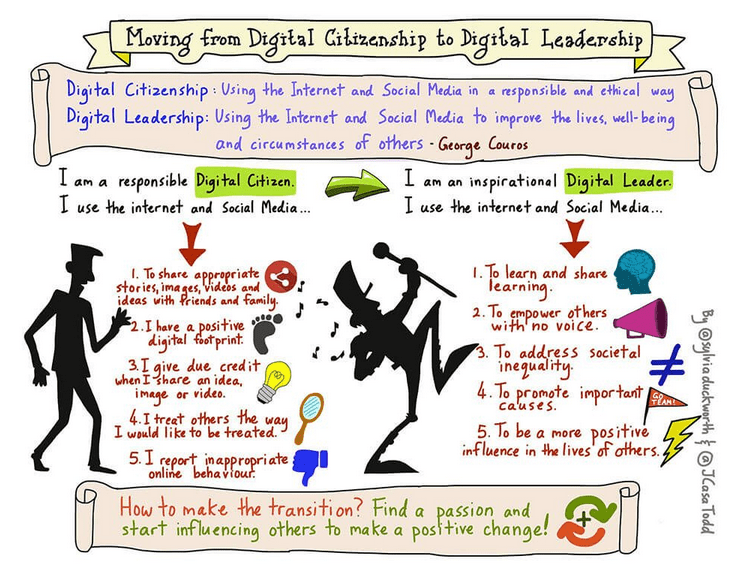
Why create a quality DLE?
The reasons behind and processes for creating a quality DLE is much like creating a ‘Learning Commons,’ (which I’ve discussed in two previous posts from ETL503 Resourcing the Curriculum: click here and here).
How do we create a quality DLE?
The article from Chen & Orth (2013) is absolutely amazing, not only because it points out that we must link the school DLE to the home DLE, but also because they outline the key steps to creating a quality DLE starting with 1. forming a group  of stakeholders, creating a shared vision and core beliefs, then 2. training, communicating with or informing all stakeholders, followed by 3. implementing the DLE plan of lessons and concepts of digital citizenship and digital literacy, completing the circle by 4. evaluating and reviewing the DLE regularly.
of stakeholders, creating a shared vision and core beliefs, then 2. training, communicating with or informing all stakeholders, followed by 3. implementing the DLE plan of lessons and concepts of digital citizenship and digital literacy, completing the circle by 4. evaluating and reviewing the DLE regularly.
How do we manage the DLE to foster globally connected learning?
As recommended by Lindsay (2016), we need to:
- Discuss the digital footprints or ‘branding’ of all students and make sure they are using long-term appropriate and culturally sensitive language and images.
- Consider the digital divide and make sure that platforms, discussion tools and global or local connections are provided synchronously (in real time) and asynchronously (offline or pre-recorded).
- Create a DLE that offers students opportunities to authentically and collaboratively engage with peers globally. (Lindsay, 2016).
How can we manage the DLE to move students from social media citizens to social media leaders?

References
Casa-Todd, J. (2016). Rethinking Student (Digital) Leadership and Digital Citizenship [Image]. Retrieved from: https://jcasatodd.com/rethinking-student-digital-leadership-and-digital-citizenship/
Lindsay. J. (2016, July 19). How to encourage and model global citizenship in the classroom. Education Week. Retrieved from http://blogs.edweek.org/edweek/global_learning/2016/07/how_to_encourage_and_model_global_citizenship_in_the_classroom.html
Chen, E., Orth, D. (2013). The strategy for digital citizenship. NAIS Independent School Magazine (online) http://www.nais.org/Magazines-Newsletters/ISMagazine/Pages/The-Strategy-for-Digital-Citizenship.aspx.
